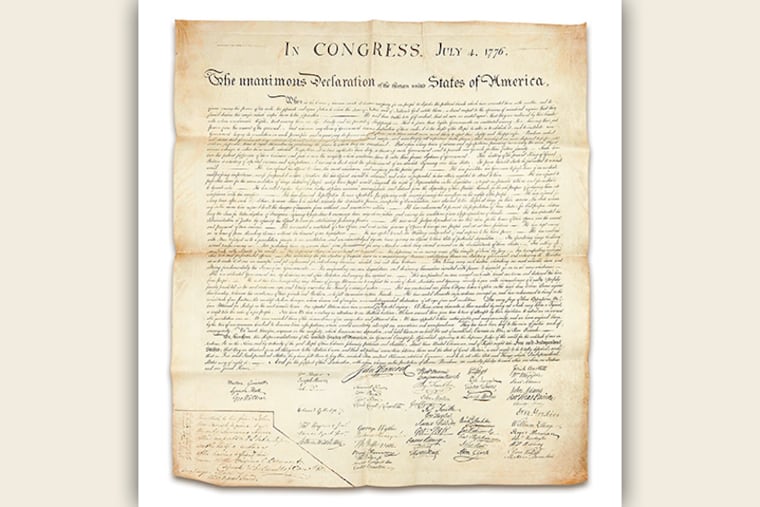Rare engravings of the Declaration of Independence are raining like cats and dogs in Philadelphia
Another copy of the rare William J. Stone engraving of the Declaration of Independence has surfaced in Philadelphia — two centuries after it was printed. It is the second to make news in two days.

No sooner did the American Philosophical Society announce that it had discovered in its archive a very rare paper copy of the Declaration of Independence engraved by William J. Stone in 1823 than Freeman’s auction house on Market Street reported that it has a parchment version up for sale July 1, just in time for the holiday.
John Quincy Adams directed Stone to make copies of the Declaration for distribution to signers of the document and to political leaders and some institutions. Stone labored for three years to produce his copper plate for the engraving, and the plate has yielded what is believed to be the most precise rendering of the original document — which Adams worried was being overused and worn down — ever made.
The APS Stone engraving on paper is quite rare. Until about 20 years ago, no one knew Stone had made any of his copies on paper. The APS engraving is now the eighth to surface.
» READ MORE: They thought they had a rare copy of the Declaration of Independence. Turns out it’s even more special.
Of the 200 parchment copies (plus one Stone made for himself) that Stone made at Adams’ behest, 52 are known to have survived, according to Freeman’s.
The parchment copy on sale at Freeman’s was one of two presented to signer Charles Carroll of Carrollton, Md., in 1824 (the other is in the collection of the Maryland Center for History and Culture), according to the auction house. It then passed to Carroll’s granddaughter and executor Emily Caton and her husband, John MacTavish, and subsequently descended in a Scottish family to the present owner.
Freeman’s estimates the copy, which had disappeared for 177 years prior to its discovery in an ancestral Scottish home, should fetch $500,000 to 800,000 at auction.